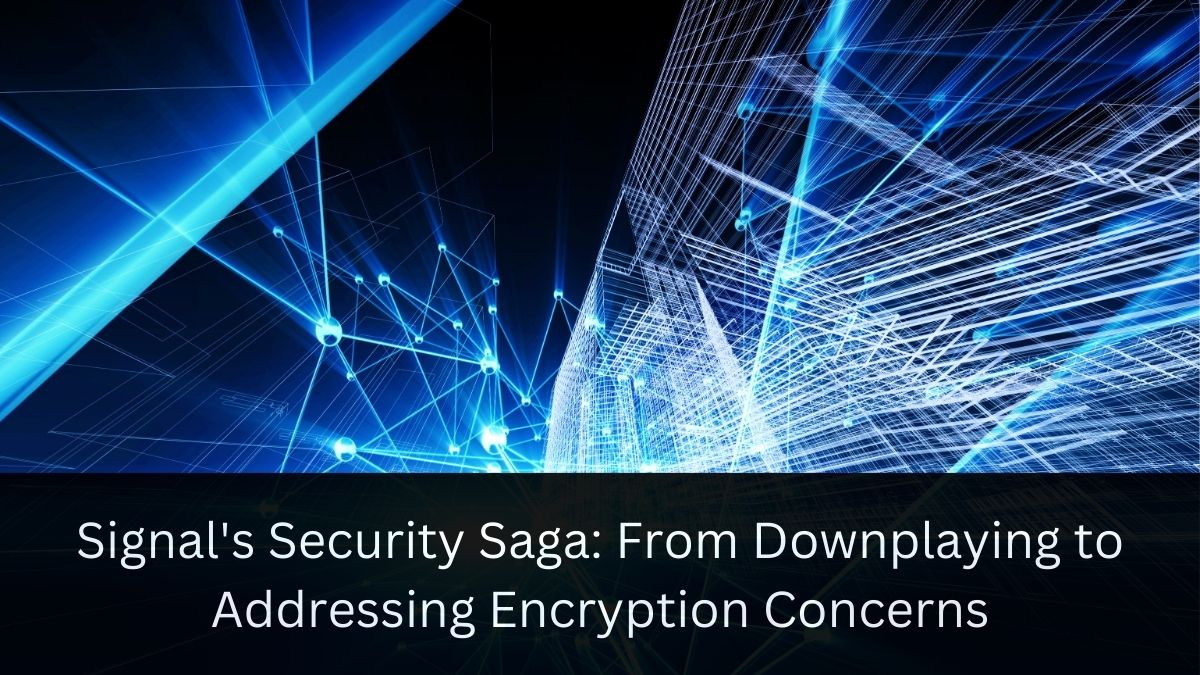Press Release
Signal’s Security Saga: From Downplaying to Addressing Encryption Concerns

In the realm of secure messaging apps, Signal has long been hailed as a paragon of privacy and security. However, recent events have thrust the popular platform into the spotlight, revealing a long-standing vulnerability that has finally prompted action. This article delves into the journey of Signal’s encryption key flaw, from its initial discovery to the recent controversy that catalyzed change.
The Root of the Problem: A Six-Year-Old Vulnerability
Unencrypted Keys in Plain Sight
Back in 2018, a concerning discovery was made about Signal’s desktop application for Windows and Mac. The app, designed to provide secure communication, was found to be storing its database encryption key in plain text. This key, crucial for decrypting the SQLite database containing user messages, was easily accessible in a local configuration file.
As someone who has long advocated for digital privacy, I remember feeling a mix of surprise and disappointment when this news first broke. The idea that a supposedly secure messaging app would leave such a critical component exposed seemed at odds with Signal’s reputation.
Initial Response: A Shrug and a Dismissal
When confronted with this vulnerability, Signal’s response was unexpectedly nonchalant. A support manager stated, “The database key was never intended to be a secret. At-rest encryption is not something that Signal Desktop is currently trying to provide or has ever claimed to provide.”
This dismissive attitude left many security-conscious users, myself included, scratching our heads. It seemed to fly in the face of Signal’s ethos of providing robust, end-to-end encrypted communication.
The Controversy Reignites: Elon Musk’s Tweet Sparks Debate
A Cryptic Warning from a Tech Titan
Fast forward to 2024, and the dormant issue suddenly erupted into the public consciousness, thanks to a tweet from Elon Musk. The tech mogul cryptically warned of “known vulnerabilities with Signal that are not being addressed.”
While Musk didn’t specify the vulnerabilities he was referring to, his tweet set off a firestorm of speculation and debate in the tech community. As someone who follows these developments closely, I found myself glued to my screen, watching the drama unfold in real-time.
Signal’s Defense and the Community’s Response
Signal’s president, Meredith Whittaker, quickly responded, asserting that there were no known unaddressed vulnerabilities. However, this claim was soon challenged by security researchers Talal Haj Bakry and Tommy Mysk, who resurfaced the old encryption key issue.
The researchers demonstrated that photos and messages sent through Signal Desktop were still vulnerable to exfiltration due to the plaintext storage of encryption keys. This revelation reignited the debate about Signal’s security practices and the potential risks to user privacy.
From Dismissal to Action: Signal’s Change of Heart
A Belated Acknowledgment
In a surprising turn of events, Signal finally acknowledged the need to address the long-standing vulnerability. This shift in stance came after years of downplaying the issue, demonstrating the power of public scrutiny and community pressure.
Technical Solutions on the Horizon
Signal announced plans to implement Electron’s SafeStorage API, a move that promises to enhance the security of locally stored data. This API will use platform-specific methods to secure encryption keys, such as the Keychain on macOS and DPAPI on Windows.
While this is a step in the right direction, it’s worth noting that the solution isn’t perfect. On Windows, for instance, the DPAPI only secures the key against other users on the same device, leaving it potentially vulnerable to malware or programs running under the same user context.
Lessons Learned and Looking Ahead
The Importance of Continuous Improvement
This saga serves as a stark reminder that even the most reputable security-focused applications can have blind spots. It underscores the need for constant vigilance and a willingness to address vulnerabilities, no matter how minor they may seem.
As a long-time user of secure messaging apps, I’ve learned to appreciate the complexity of balancing user-friendly features with robust security measures. This incident has reinforced my belief in the importance of transparency and responsiveness from tech companies when security concerns are raised.
Community Involvement: A Double-Edged Sword
The role of the tech community in bringing this issue to the forefront cannot be overstated. From independent researchers to concerned users on social media, the collective voice of the community proved instrumental in pushing for change.
However, it’s somewhat disheartening that it took a public controversy to spur action on a known vulnerability. This raises questions about the responsiveness of tech companies to security concerns raised through less public channels.
As we reflect on Signal’s journey from dismissing to addressing this encryption key flaw, it’s clear that the path to robust digital security is an ongoing process. It requires not only technical expertise but also a commitment to transparency and a willingness to acknowledge and address vulnerabilities.
For users of Signal and other secure messaging apps, this incident serves as a reminder to stay informed and engaged. While we rely on these platforms to protect our privacy, we must also be willing to hold them accountable when they fall short of their promises.
As we move forward, let’s hope that this experience encourages Signal and other tech companies to be more proactive in addressing security concerns. After all, in the world of digital privacy, complacency can be the greatest vulnerability of all.
What are your thoughts on this development? Has it affected your trust in Signal or other secure messaging apps? Share your perspectives in the comments below – your insights could contribute to the ongoing dialogue about digital security and privacy.
